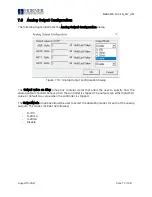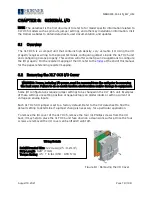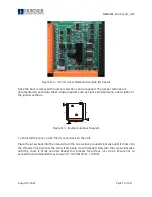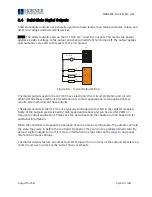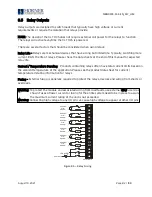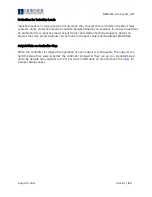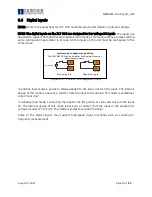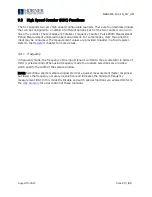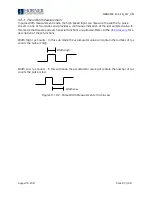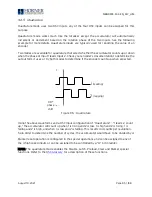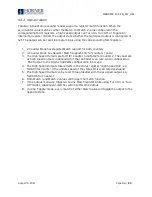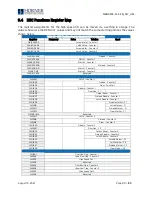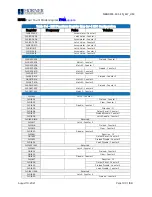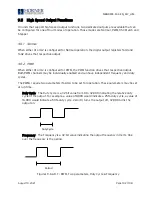
MAN0974-13.1-EN_XL7_UM
August 19, 2021
Page 89 | 198
9.2 Glossary
Table 9.1
–
Glossary of High Speed I/O Terms
Accumulator
Register used to accumulate or store up a sum or count of many items or
events.
Clear
A special function to zero out the value in a specific register. (Not used with
Frequency or Period Measurement.)
Disable
A special function to prevent the counter from running.
Encoder
A sensor or transducer for converting rotary motion or position to a series of
electronic pulses
FPGA
An integrated, configurable circuit that allows the controller to be
programmed to have either two high-speed counters or four high-speed
counters.
Frequency
Input
The number of times an electromagnetic signal repeats an identical cycle in a
unit of time, usually one second.
Latch
(strobe)
A special function that uses a digital logic circuit to store one or more bits. A
latch has a data input, a clock input and an output. When the clock input is
active, data on the input is "latched" or stored and transferred to the output
register either immediately or when the clock input goes inactive. The output
retains its value until the clock goes active again.
Marker
Input into the OCS that indicates a particular position. Typically, an encoder
has a marker output that represents a specific point in the rotation.
Polarity
A Polarity pull-down box is associated with each function and indicates the
manner in which the trigger happens (e.g., High level, Low Level, Falling
Edge, Rising Edge).
Preload
(load)
A special function used to trigger loading of a value into a register upon an
event. (Not used with Frequency or Period Measurement.)
Quadrature
A high-speed device that expresses the phase relationship between two
periodic quantities of the same period when the phase difference between
them is one fourth of a period. A coupler in which the two output signals are
90° out of phase.
Totalizer
A counter that sums the total number of cycles applied to its input.



